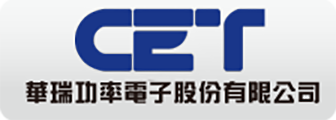Siemens Lays Out Vision for Mentor
When Siemens AG agreed last November to buy Mentor Graphics Corp. for $4.5 billion, it wasn't the first time that the German conglomerate had entertained the idea of swallowing the Portland, Ore.-based EDA software vendor.
Turns out that the two companies had had what executives termed a "fly by" some nine years before. When rival Cadence Design Systems Inc. launched a hostile takeover attempt of Mentor in 2008, Siemens was one of several potential white knight acquirers that CEO Walden Rhines reached out to.
Rhines gave a presentation to Chuck Grindstaff, then chief technical officer of Siemens PLM Software. Siemens ultimately passed on the opportunity and Cadence eventually withdrew its acquisition offer Mentor's board failed to cooperate and the U.S. Federal Trade Commission indicated it would be taking a hard look at the deal.
But even before the "fly by," Grindstaff, now the executive chairman at Siemens PLM, had envisioned the integration of a software company that specialized in electronic design and his firm, which mainly provides software for product lifecycle management and manufacturing operations.
"This idea of putting two companies like us together has been in my head for 20 years," Grindstaff said during an interview with trade press editors at the Design Automation Conference (DAC) here Tuesday (June 20). He added that it was just a matter of waiting for the technologies to evolve to the point where the disruption in the marketplace caused by such a deal would be manageable compared with what could be gained from the synergies involved.
During the meeting with the press and a keynote address earlier in the morning, Grindstaff made a persuasive case for the combination of the two firms at a time when Siemens PLM customers—mostly system vendors from across various industies—are increasingly designing their own chips for inclusion in their products.
在线留言询价

Siemens Buys Agilion to Boost IoT

Siemens Acquires Solido Design Automation
- 一周热料
- 紧缺物料秒杀
| 型号 | 品牌 | 询价 |
|---|---|---|
| BD71847AMWV-E2 | ROHM Semiconductor | |
| RB751G-40T2R | ROHM Semiconductor | |
| MC33074DR2G | onsemi | |
| CDZVT2R20B | ROHM Semiconductor | |
| TL431ACLPR | Texas Instruments |
| 型号 | 品牌 | 抢购 |
|---|---|---|
| STM32F429IGT6 | STMicroelectronics | |
| TPS63050YFFR | Texas Instruments | |
| ESR03EZPJ151 | ROHM Semiconductor | |
| BP3621 | ROHM Semiconductor | |
| IPZ40N04S5L4R8ATMA1 | Infineon Technologies | |
| BU33JA2MNVX-CTL | ROHM Semiconductor |
- 周排行榜
- 月排行榜
AMEYA360公众号二维码
识别二维码,即可关注


请输入下方图片中的验证码:























